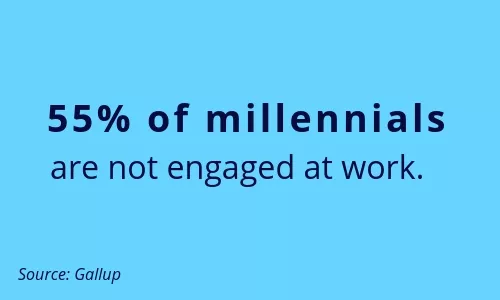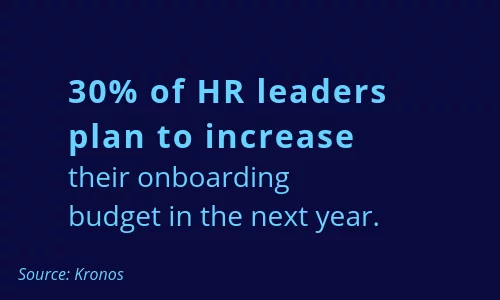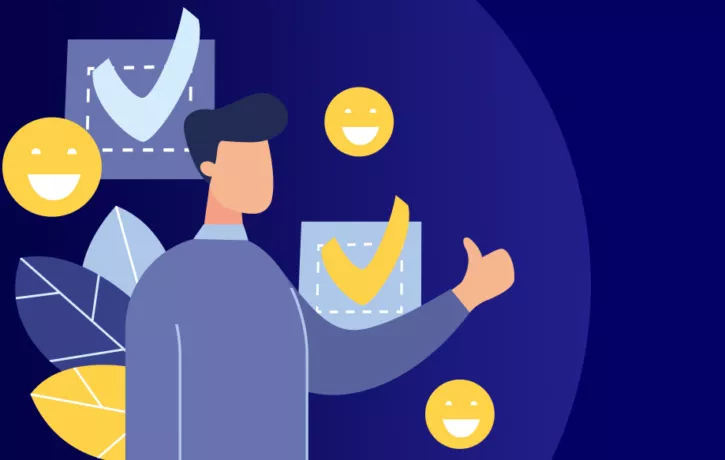Millennials now account for 35% of American employees, making them the largest generation in the U.S. workforce.
Since the millennial generation eclipsed their older counterparts, organizations must confront a host of new challenges. Employee turnover of epic proportions is one of the most urgent.
According to Deloitte, nearly half of millennials plan to leave their job within two years. Millennial turnover isn’t cheap — churn from this generation alone costs the U.S. economy $30.5 billion annually.
High disengagement and low retention? Your new hire onboarding could be to blame
Dive deeper: Boost employee productivity and performance with the ultimate training manifesto.
While many tend to boil this costly trend of “job hopping” down to lack of commitment, it’s more symptomatic of widespread  disengagement. The majority of millennials (55%) are not engaged in their work, Gallup found.
disengagement. The majority of millennials (55%) are not engaged in their work, Gallup found.
Failing to engage your workforce — particularly millennials — triggers a range of consequences in addition to poor retention. Low motivation, absenteeism, and worse performance are all likely effects.
Onboarding new hires is the best time to engage your employees, establish your company as a place where they can grow, and improve your retention rates.
There is much at stake when it comes to employee onboarding, but it doesn’t need to be complicated. With a new employee training checklist, you can set your new hires on the track to success.
How a new employee training checklist can boost business performance
The first days and weeks of your new employee’s tenure are the most vulnerable and critical. New hire training sets the tone for the rest of the employee experience — good or bad.
With a new employee training checklist, you can ensure you cover the essentials of a positive onboarding experience. You can design an employee training plan that allows you to reap the benefits of your new hire’s skills much sooner.
Onboarding is also the opportune time to show new employees why working at your company in the long-term is beneficial.
For example, millennials care most doing purposeful work, maintaining a healthy work-life balance, and professional development. By incorporating elements of each of these during onboarding, you can automatically increase engagement from the start. In effect, you’ll boost retention.
Employee onboarding in 7 steps
A comprehensive new hire onboarding model is critical for preparing your new hires to be meaningful contributors to the organization. But beyond that, it creates a framework for establishing high levels of engagement and commitment.
For the best possible outcomes, be sure to include these seven steps in your new employee training checklist.
1. Open communication before their first day
The best way to engage your new hires is to begin before your new hire even arrives.
Establishing communication ahead of their first day shows your new hire that you are prepared and excited for their arrival. It also gives them the chance to ask questions before they start, which can be a great comfort.
2. Get paperwork out of the way
Some elements of new hire onboarding are less glamorous than others, such as the paperwork for HR and insurance.
While some administrative tasks are required, it’s important to make this part of onboarding as efficient and painless as possible. The sooner you finish the “boring” tasks, you can move on to the more engaging parts of onboarding.
3. Make formal introductions with colleagues
New hires want to learn what other people in the company are doing so they can better understand how their role fits into the bigger picture.
Peer mentoring is one effective way to achieve this, though it was a part of the onboarding process for only 32% of respondents from a Kronos survey.
Only about half of respondents (47%) set up meetings for new hires with key stakeholders and teams. By doing this more, you can help your new hires better situate their role in the organizational strategy, and in turn increase engagement and motivation.
4. Identify their individual training needs
Certain components of employee training are universal, but every individual employee has their own preferences when it comes to modes of learning and communication.
Before new hire training begins and throughout the onboarding process, it’s important to ask new hires what they need to be successful. However, just 37% of respondents completed an assessment of future training needs during the onboarding process.
By asking new hires about their goals and which resources they need to achieve them, you will instantly make them feel like their growth is your priority.
5. Invest in all of the necessary resources
Effective onboarding takes time and money.
Some HR leaders recognized their shortcomings in this area — 30% said they intend to increase their onboarding budget in the next year. 
However, many organizations still don’t dedicate enough time to onboarding. Because of this, they’re not fully maximizing the potential of new hires.
More than a third of organizations (37%) said onboarding lasts between a few hours and a week. While a quarter (24%) use a month-long onboarding process.
While every role requires different amounts of training, onboarding is not an hours- or week-long process. It can take up to a year before an employee really feels like they understand their role and responsibilities.
6. Provide adequate software training
The sheer volume of software platforms new employees must learn to use is enough to make them feel stressed and intimidated.
Adequate software training is critical to remedying “software frustration,” which can contribute to disengagement and even employee burnout.
Traditional approaches to training are unfit for the modern digital workplace. Training manuals, webinars, and tutorials require significant time, and don’t produce significant knowledge retention.
Digital learning solutions that enable contextual learning are the most effective way for employees to learn new software. Such tools provide real-time guidance based on a user’s needs, highlight unused features, and deploy proactive support to ensure your employees can complete all of their tasks easily, even if they’ve never used the platform before.
7. Measure the efficacy of your efforts
More than half (55%) of organizations said they don’t measure the effectiveness of onboarding programs. This is a big mistake. First, you lose an opportunity to improve training. Second, you can change your training based on employee feedback to make it more engaging and valuable to your new hires, now and in the future.
Remember: Employee productivity and engagement begins with onboarding. Use this new employee training checklist to help you reduce disengagement and churn.
________
WalkMe’s Digital Adoption Platform (DAP) transforms the user experience in today’s overwhelming digital world. Using artificial intelligence, engagement, guidance, and automation, WalkMe’s transparent overlay assists users to complete tasks easily within any enterprise software, mobile application or website. Discover how a DAP can revolutionize your business — request a demo today.

